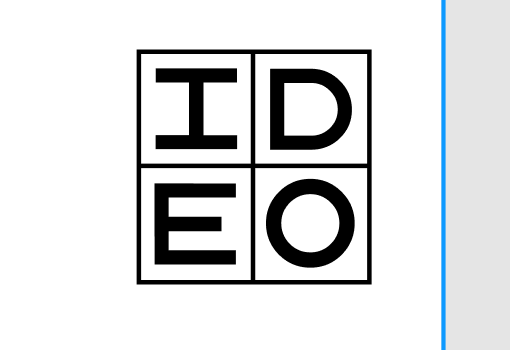Why we made it
Back in June, IDEO Chicago held a public event focused on Emerging Tech. For these types of events we want to make sure they are collaborative and participatory, while focused on the event topic. The broadest theme we wanted folks to take away from our session was: All of us can shape how AI defines our future, and the way to make sure it's the future we want is by participating in the ways we use and build the tools right now.
So we thought - what if we all write a manifesto together to capture and encourage this sentiment? This way we can embody this call to action and create a fun, participatory activity.
Aligning on a single point of view collaboratively with 75 participants from a variety of backgrounds sounds like a fun, party activity right?
Joking aside, the group authorship of a manifesto has historically been extremely challenging. This process often draws attention to differences within a group, and negotiating this intersection of the opinions of even a few people is divisive, and often serious.
We wanted it to be easy and fun though, so what should we do? Lets's make an AI do it! Here are some reasons that an LLM was able to shift this activity from divisive and serious to collaborative and fun.
- AI takes over the task of reconciling what gets included, what doesn’t.
- Errors and misinterpretations can spark the group to react and refine their thoughts
- AI Lowers the effort needed to run this kind of activity, allowing us to be more engaged with our attendees
This idea was purposefully simple, relying on abilities LLMs (and specifically GPTs) have out of the box:
- Writing English
- Editing
- Multimodal input
- Connecting to other systems
How it worked
- We started with a call for participants to capture their beliefs around the responsible use of AI, and where they aim to use it in their own personal/professional practice
- Write this on a post-it.
- I take a picture of a set of post-its and send it to a custom GPT
- The GPT parses the post-its and integrates the sentiments into a manifesto.
At IDEO, iteration is a fundamental piece of the design process for anything, So we had three rounds of feedback interspersed throughout an evening of talks - with one additional rule: Blue post-its mean "revise" something in the current manifesto and orange ones mean "integrate" an idea into the manifesto.

It worked! The AI allowed us elicit feedback, revise the manifesto, and communicate the revision in about 15 minutes each round. Traditionally one drawback of an LLM is that the rationale for decisions can't be investigated. By relieving humans from the role of being perfect mediators, it allowed the group to unite in correcting some of the comically misinterpreted summarizations, and work together to course correct instead of getting hung up around how it got to the wrong place in the first place. It's not a bug, it's a feature!
For instance: This one got a few startled reactions and laughs - where did that even come from? Who cares, let's fix it!

Instead of directly editing the manifesto text, or asking the custom GPT to remove this principle, we asked the audience to contribute post-its aimed at changing this opinion. And this collective action, as hoped, worked!
After the third revision the manifesto was here:

"Translucent input and transparent output?" That's a pretty fun metaphor! It felt like it's in a pretty good place, given the pretty chaotic means of getting there. But is it really about this manifesto, or is the real manifesto the AI we made along the way?
How we made the Manifesto Maker
The Manifesto system consists of a custom GPT, accessed through a cellphone with camera access, a Firebase Realtime Database and a very simple React frontend app.

The custom GPT is instructed to use its vision capability to transcribe suggestions from post-it notes that suggest builds (on blue post-its) and complications (on orange post-its) and incorporate the new information into an existing manifesto. It also has a blank version of the manifesto that it can use to reset the current one if asked.
The custom GPT is configured with two custom Actions, one to retrieve the manifesto from the database and one to write the new version to the database. The GPT’s instructions ask it to retrieve the manifesto before making edits and, once the edits are complete, to update the database copy.
The database is a Firebase Realtime Database. We chose this service because it’s very simple to connect to a front end and get realtime updates, which we wanted so that our event attendees could see the incremental updates as they happened. The GPT’s Actions are talking to Firebase Functions that perform the reading and writing.
Finally, a basic React frontend app connects to the Firebase Realtime Database and displays the current manifesto. Both the functions and the frontend are deployed via Firebase.
Below are the custom GPT Instructions:
This GPT reads and updates a manifesto. Always take the following actions:
1. Before responding, begin by retrieving the current manifesto using the Action "getManifesto".
2. Analyze the picture for modifications to the manifesto as outlined below.
3. Once you have rewritten the manifesto run the Action "updateManifesto" to save your revisions.
Before doing anything ALWAYS run "getManifesto" to ensure that you're starting from the latest version.
ALWAYS run "updateManifesto" when you modify the manifesto.
The GPT is fed comments as images of post-it notes with text on them. Each time a new post-it note is input, the GPT will modify a manifesto to incorporate the message on the post-it. The GPT will look at the image, pull out the text from it and use this text as the comment to incorporate into the manifesto.
The color of the background is important. If it is "orange" this means this is a build - incorporate this into the manifesto. If it is "blue" this means "complicate." A post-it with a blue background means we should revise or remove something in the manifesto
Below is a starter manifesto. As content is added, the amount of principles will grow. However once there are 7 principles, each new comment will need to modify the current principles to incorporate the sentiment of the comment. Please keep the language in the "principles" and "commitments" section as concise as possible.
Preamble
In an era where ________ has emerged as a transformative force, it is imperative that we, as ________ and ________, harness its potential with a profound sense of responsibility. Our manifesto outlines the principles and commitments necessary to ensure that ________ serves as a catalyst for ________, ________, and ________ advancement.
Principle : ____________
Commitment:
Conclusion
As stewards of ________, we have a profound responsibility to ensure its application aligns with our highest ________ standards and ________ values. By adhering to these principles and commitments, we can create a future where ________ not only drives ________ and ________ advancement but also enriches ________ and preserves our ________.
Together, let us embark on this journey towards responsible ________, where ________ and ________ go hand in hand, and every technological leap forward is matched by our commitment to the ________.
What did we learn?
- You can lean in to the inherent opacity and BS of LLMs to reimagine emotionally charged negotiations as fun party games. There may be a thread of utility worth pulling on here for navigating more challenging mediations.
- It really is possible to build simple expressions of some of the abilities people want from capable AI systems, in this case a memory that can be recalled and written to, with minimal effort. Building these abilities helps you understand why they're meaningful.
- Looking beyond the chat interface doesn't mean foregoing it all together, but rather using mostly off the shelf abilities like multimodality and custom instructions to engage different kinds of audiences, in this case groups, in ways that match natural interactions like post-it brainstorms.
Heading 1
Heading 2
Heading 3
Heading 4
Heading 5
Heading 6
Lorem ipsum dolor sit amet, consectetur adipiscing elit, sed do eiusmod tempor incididunt ut labore et dolore magna aliqua. Ut enim ad minim veniam, quis nostrud exercitation ullamco laboris nisi ut aliquip ex ea commodo consequat. Duis aute irure dolor in reprehenderit in voluptate velit esse cillum dolore eu fugiat nulla pariatur.
Block quote
Ordered list
- Item 1
- Item 2
- Item 3
Unordered list
- Item A
- Item B
- Item C
Bold text
Emphasis
Superscript
Subscript






















.jpeg)

